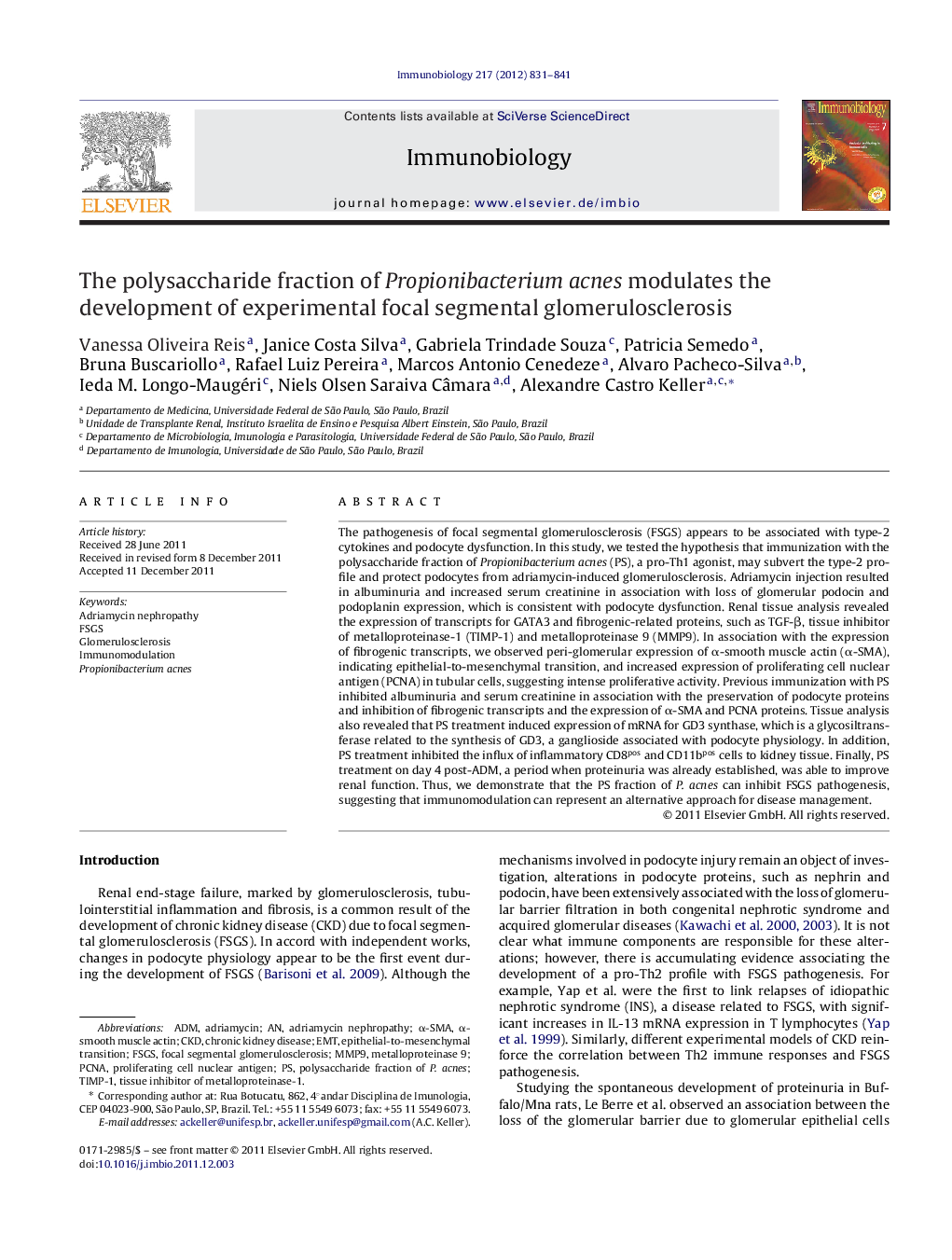| کد مقاله | کد نشریه | سال انتشار | مقاله انگلیسی | نسخه تمام متن |
|---|---|---|---|---|
| 2183518 | 1095573 | 2012 | 11 صفحه PDF | دانلود رایگان |

The pathogenesis of focal segmental glomerulosclerosis (FSGS) appears to be associated with type-2 cytokines and podocyte dysfunction. In this study, we tested the hypothesis that immunization with the polysaccharide fraction of Propionibacterium acnes (PS), a pro-Th1 agonist, may subvert the type-2 profile and protect podocytes from adriamycin-induced glomerulosclerosis. Adriamycin injection resulted in albuminuria and increased serum creatinine in association with loss of glomerular podocin and podoplanin expression, which is consistent with podocyte dysfunction. Renal tissue analysis revealed the expression of transcripts for GATA3 and fibrogenic-related proteins, such as TGF-β, tissue inhibitor of metalloproteinase-1 (TIMP-1) and metalloproteinase 9 (MMP9). In association with the expression of fibrogenic transcripts, we observed peri-glomerular expression of α-smooth muscle actin (α-SMA), indicating epithelial-to-mesenchymal transition, and increased expression of proliferating cell nuclear antigen (PCNA) in tubular cells, suggesting intense proliferative activity. Previous immunization with PS inhibited albuminuria and serum creatinine in association with the preservation of podocyte proteins and inhibition of fibrogenic transcripts and the expression of α-SMA and PCNA proteins. Tissue analysis also revealed that PS treatment induced expression of mRNA for GD3 synthase, which is a glycosiltransferase related to the synthesis of GD3, a ganglioside associated with podocyte physiology. In addition, PS treatment inhibited the influx of inflammatory CD8pos and CD11bpos cells to kidney tissue. Finally, PS treatment on day 4 post-ADM, a period when proteinuria was already established, was able to improve renal function. Thus, we demonstrate that the PS fraction of P. acnes can inhibit FSGS pathogenesis, suggesting that immunomodulation can represent an alternative approach for disease management.
Journal: Immunobiology - Volume 217, Issue 9, September 2012, Pages 831–841